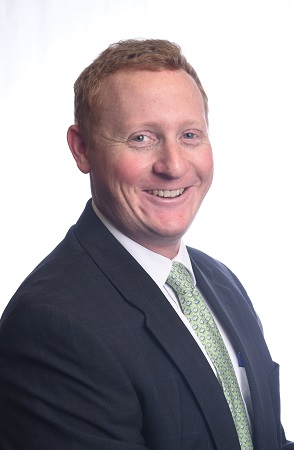Before moving into insurance, Jeffrey W. Howard was an accountant. "In the public accounting world, you find a lot of issues with a company, but because of your required independence, you’re not allowed to consult and help fix that. That really irked me," he says.
 Jeffrey W. Howard, ERM
Jeffrey W. Howard, ERM
Vice President
Gillis, Ellis & Baker
New Orleans
How did you get started at your agency?
I was recruited to my agency from EY, where I was an accountant. What really attracted me to my firm was that in the public accounting world, you find a lot of issues with a company, but because of your required independence, you’re not allowed to consult and help fix that. That really irked me. I like the ability to both identify issues with my clients and be in a position to help.
Why focus on commercial umbrella insurance?
It’s a natural extension of all of the other work we do. Most of our clients require some form of additional protection, whether a higher limit than the primary is mere prudence or a contractual requirement driven by the nature of their work.
How has commercial umbrella changed over the years?
Changes in umbrella coverage reflect changes in the underlying coverages it supports. As commercial auto rates have continued to increase and become more challenging, that has led to a direct correlating impact on the commercial umbrella space. In that same vein, we’ve seen umbrella markets tighten in some instances into what they’re willing to go over, particularly in the auto space.
Biggest commercial umbrella challenges?
Marrying the right insured with the right carrier—finding the right market that wants to cover all the risks the insured is operating under. Whether they have a little bit of marine exposure or they’re an educational institution that wants limits over the educator’s legal liability, or even as it relates to tackle football and sports activities being restricted on the umbrella layer—it’s all a matter of matching up the insured with the right carrier.
Future of commercial umbrella insurance?
I think for the most part, the future of commercial umbrella is relatively stable—I’m optimistic about it, contrary to how I feel about commercial auto. I think in anything where gaps exist, people will come in and fill those voids. It’s just a matter of keeping on top of the new players and who’s willing to write what you need.
It also depends on the legal environment where we see settlements coming in. The main reason is that while we do see some major, headline-grabbing judgments and settlements out there, we rarely see settlements that puncture and significantly erode the umbrella layer.
We’re really dealing with severity versus frequency issues. As people concentrate on reducing frequency, which they’re doing through technology or better risk management practices, that bodes in commercial umbrella’s favor. Hopefully, we’re able to reduce both the frequency and severity of losses in the long term.
Advice for a fellow commercial umbrella insurance agent?
I would say not all policies are created equal, particularly when you’re working in the surplus lines business. Take that extra moment to makes sure it does what you intend it to do.
And make sure you understand not only what’s on the declarations page—they’ve got $5 million of coverage, but what exclusion is buried on page 67 that the underlying supports but the umbrella does not? Most importantly and prominently, we find pollution exclusions on the umbrella where maybe the primary picks it up. That’s a common gap we find with clients who aren’t with the right carrier.
Favorite commercial umbrella success story?
We had an issue with a carrier where we went looking for a $25-million tower and we went to one of our partners looking for $10 million of coverage. After looking at it, they said, ‘Well, we’d also like to look at the primary, because we think we can enhance that as well.’ It was a huge win-win where we were really on the lookout for more umbrella capacity. We’d expressed concerns with the primary policies, and they took one look at it and said, ‘Absolutely, we can do this.’ That was one of our biggest wins—finding a carrier that could not only beat the excess capacity, but also step in and solve a lot of the problems the client had on the primary layer.
Will Jones is IA assistant editor.
